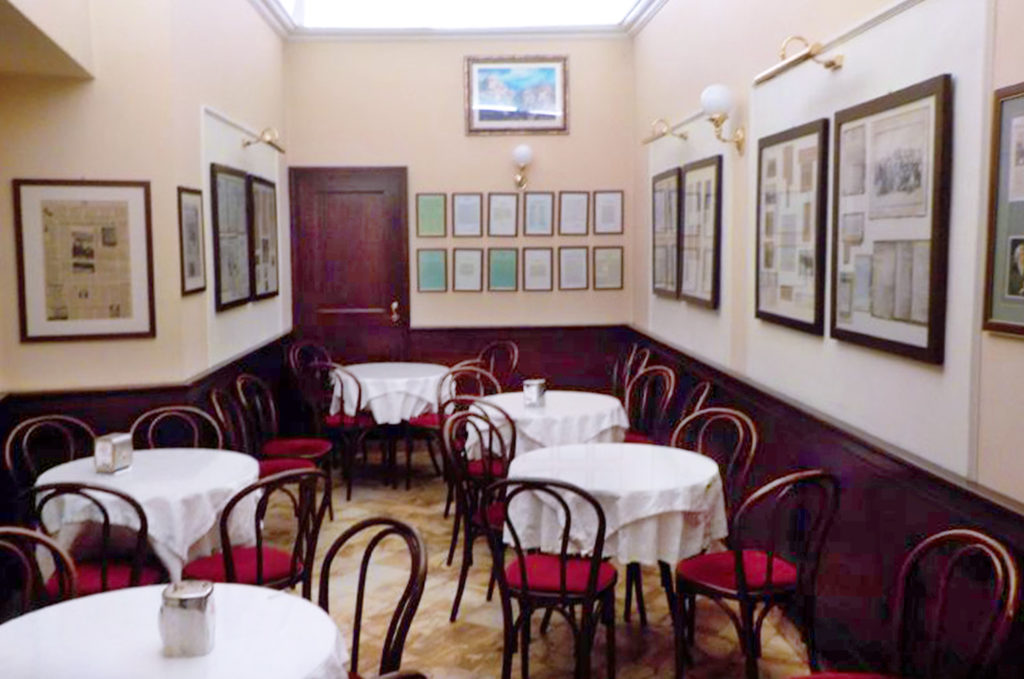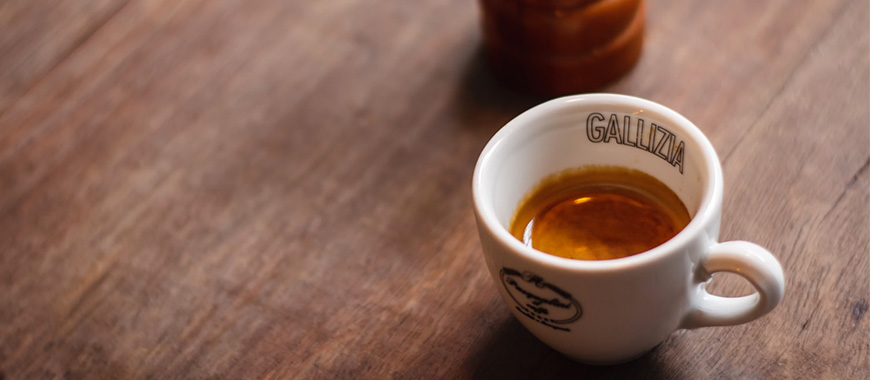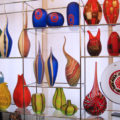Authentic institutions of hospitality, the historic coffee houses of Italy, allow you to sip an espresso while contemplating the stylish interiors. These were temples of the cultural and political scenes of the 1800s and 1900s. The events they have witnessed and memories left by illustrious visitors let you travel back in time enjoying the historical heritage and traditions of Italy. This week we visit some of the most historic cafés throughout the country.
Caffe Florian
Caffè Florian in Venice was founded 1720 and is one of the oldest cafés in continuous operation in all of Italy. Frequented by literary and historical figures such as Lord Byron, Goethe, Rousseau, Gozzi and Silvio Pellico, it was also here that Casanova courted his ladies. The flamboyant halls and decoration are still evocative of the traditional charm, created by its original owner and founder Floriano Francesconi.

Gran Caffè Gambrinus in Naples was founded in 1860 and has always been a literary cafe with a magnificent belle époque-interior. Gabriele d’Annunzio wrote the text of the Neapolitan song “A vucchella” here. At the end of the 19th century it was the intellectual and political center of the city. Philosopher Benedetto Croce met other intellectuals, journalists and politicians who were active on the cultural scene of those years and chose Gambrinus as their meeting place.
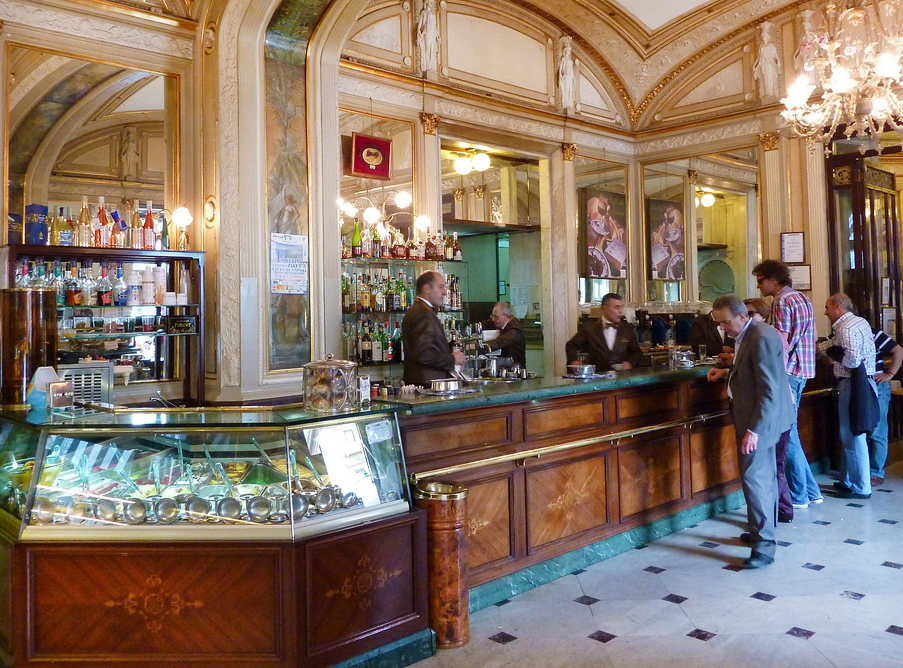
Caffe Gilli
Caffè Gilli in Florence was founded in 1733 and moved twice before taking up its current location about 120 years ago in Piazza della Repubblica, then called Piazza Vittorio Emanuele. It was a place where intellectuals and journalists of the newspaper La Voce used to meet. It soon became a gathering place for artists such as Doni, Calignani, Pozzi, Polloni and Pucci.
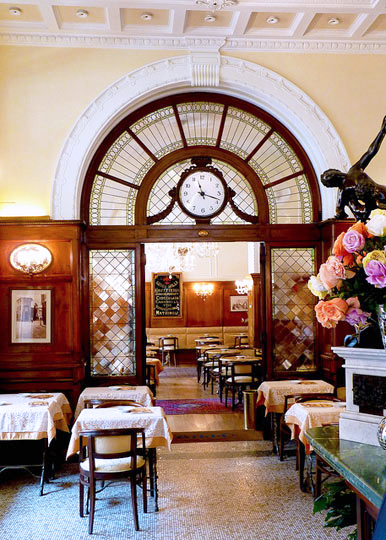
Antico Caffe della Pace
In Rome, Antico Caffè della Pace was founded 1891 near Piazza Navona. The coffee house includes three charming little rooms in a mixed style of Baroque, Empire and Art Nouveau. The outdoor tables overlook the beautiful square and the Church of Santa Maria della Pace. People from all walks of life stop off, day or night, to enjoy an espresso. But it has long been a favorite haunt of painters, writers and artists.
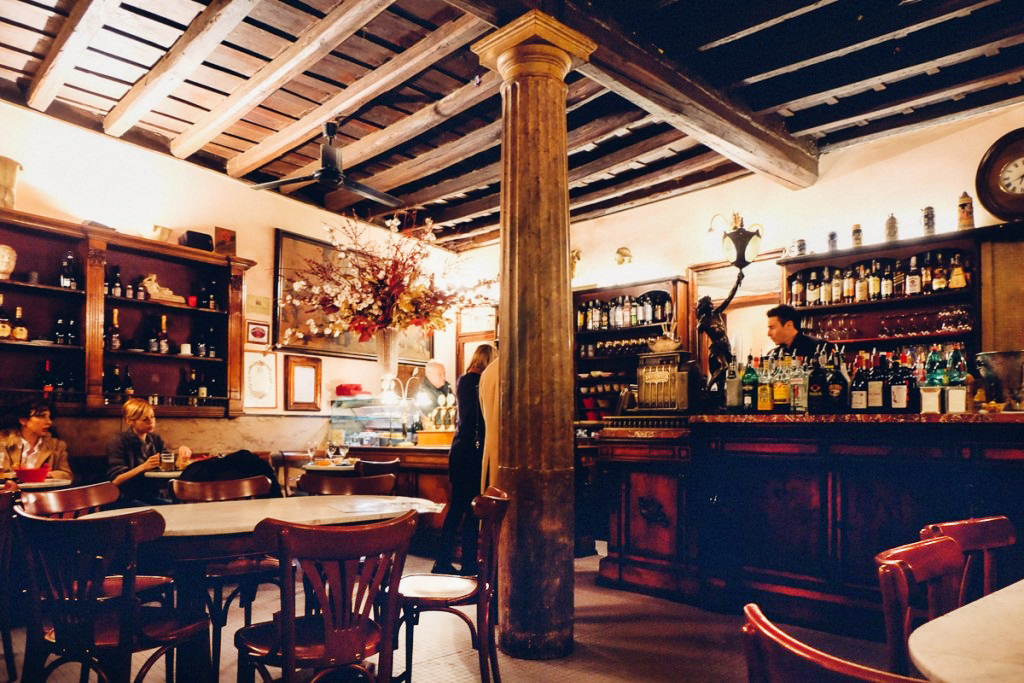
Caffe Fiorio
Caffè Fiorio in Turin was founded in 1780 and was the favorite coffee house of Cavour, Rattazzi and D’Azeglio, all of whom played a role in the founding of the united Italian nation. As the meeting place of the era’s most influential thinkers, before starting his morning audiences, Charles Albert, King of Piedmont-Sardinia, used to ask, “What did they say at Fiorio’s?”
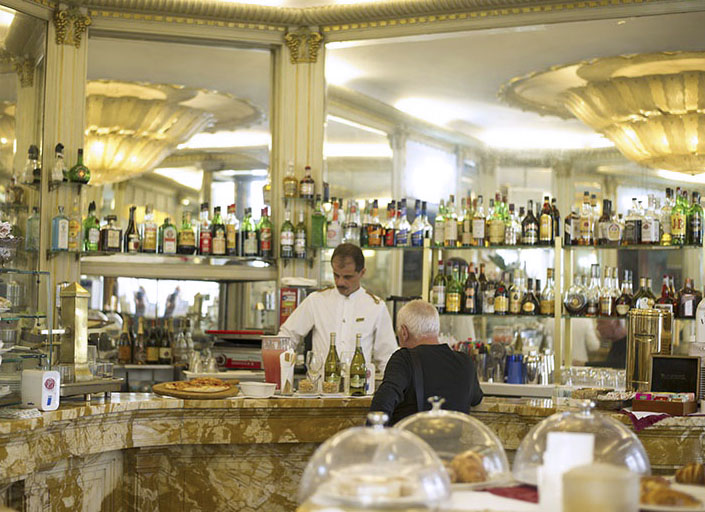
Gran Caffe Renzelli
In the city of Cosenza in Calabria, the Gran Caffè Renzelli dates back to 1803. It has been run by the same family for seven generations. A meeting place of patriots, it was here that Domenico Frugiuele and Gianfelice Petrassi launched a revolt against the Bourbons on March 9, 1844 and proclaimed a constitutional government. It was also from this café that food was sent to alleviate the imprisonment of Attilio and Emilio Bandiera, known as the Bandiera Brothers, two Italian patriots who were sent to prison after being betrayed by informants. Close to the Rendano Theater, it is popular as an after-theater café.

Caffe Mangini
In Genoa, the café, pastry-shop Mangini opened 145 years ago and is situated in Piazza Corvetto, at the end of Via Roma, one of the city’s most elegant streets. Since its inception, Caffè Mangini has been a meeting place for journalists, writers and artists.
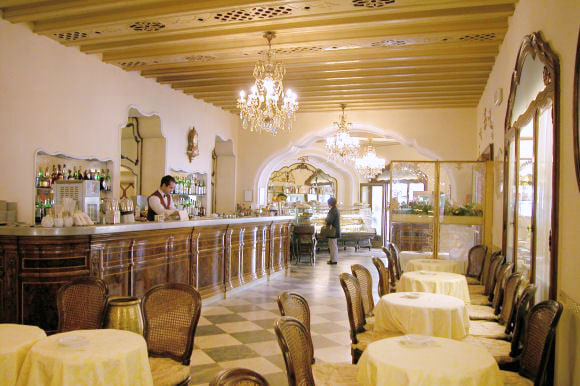
Antico Caffe di SImo
Antico Caffè di Simo in Lucca dates to 1846 and was frequented by composer Giacomo Puccini and many other artists of the day. It was originally known as the Antico Café del Caselli, but even upon its renaming, the furnishings and decoration in Liberty style were preserved, as were the numerous souvenirs of their famous visitors.

Caffe Zucca
Milan’s Caffè Zucca opened at the same time as the Galleria Vittorio Emanuele in 1867. Giuseppe Verdi, Arturo Toscanini, Puccini, Arrigo Boito and Giuseppe Giacosa would all come here to meet with other composers, artists and intellectuals to have a drink after shows at La Scala opera house. The coffee house was frequented by many famous and influential people of the past, such as the Italian Prime Minister Zanardelli, Eugenio Torelli Viollier, founder of the newspaper Il Corriere) and King Umberto I. The original liberty decoration, with its prestigious chandeliers and refined mosaics, have been respectfully preserved.

Caffe Nazionale
In the far northwest in Aosta, Caffè Nazionale opened in 1886. Located on the ground floor of a beautiful neo-classical palazzo that houses the town hall, the café includes an impressive circular Gothic hall that came from a 13th century convent that previously occupied the spot. In the 1800s, it staged artistic performances and dance shows and it was here that the first film showings of the 20th century were screened.
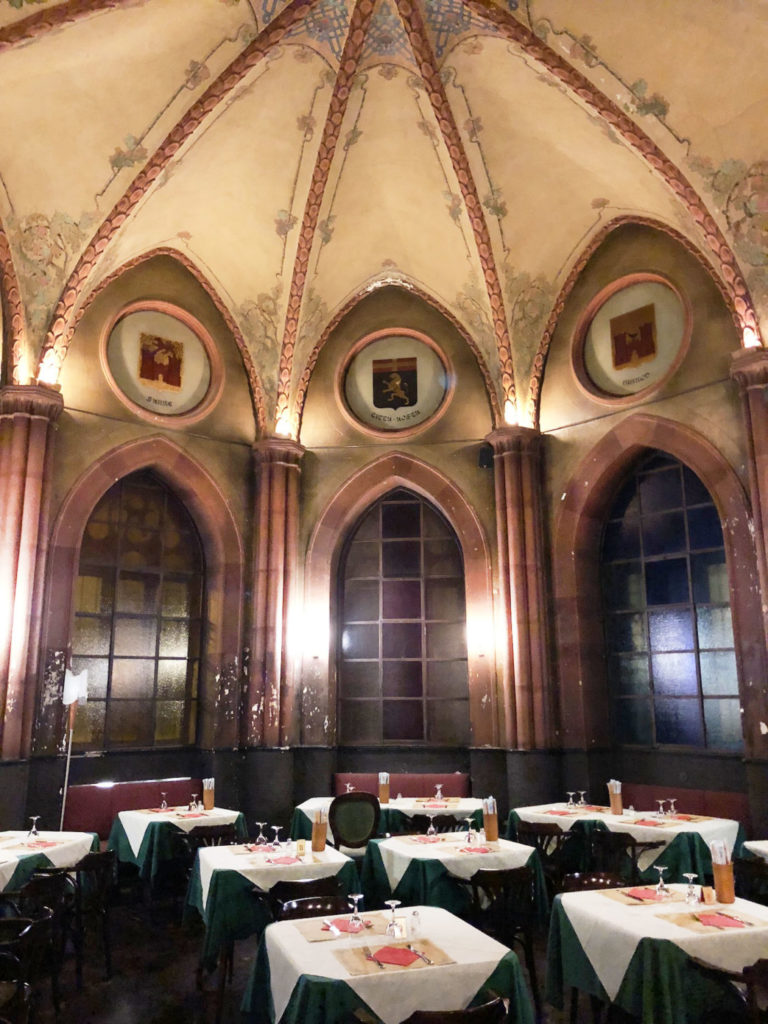
Caffe del Tasso
Bergamo has one of the oldest establishments in Italy, Caffè del Tasso, which was found in 1476. During the Renaissance it was known as Locanda delle due Spade, the “Inn of Two Swords,” but in 1681, the inn took the name of the poet to whom Bergamo dedicated the nearby statue and became Torquato Tasso Caffé e Bottiglieria. Located on the prestigious Piazza Vecchia, the café was frequented by musicians, artists, writers and luminaries visiting the city. It was here that in 1859, local volunteers signed up to become part of Garibaldi’s Thousand. A century and a half ago, it was renovated in neoclassical style and renamed Caffè del Tasso.

Caffe Poliziano
In the Tuscan town of Montepulciano, Caffè Poliziano was founded in 1868. This delightful and elegant café-restaurant in Art-Nouveau style is located in the heart of the old town. It has long been a cultural and intellectual hub, frequented by poets such as Carducci, Pirandello, Prezzolini and Malaparte. Visitors from around the world come to enjoy the finest, traditional Tuscan recipes and take-in the beautiful view over the Valdichiana.
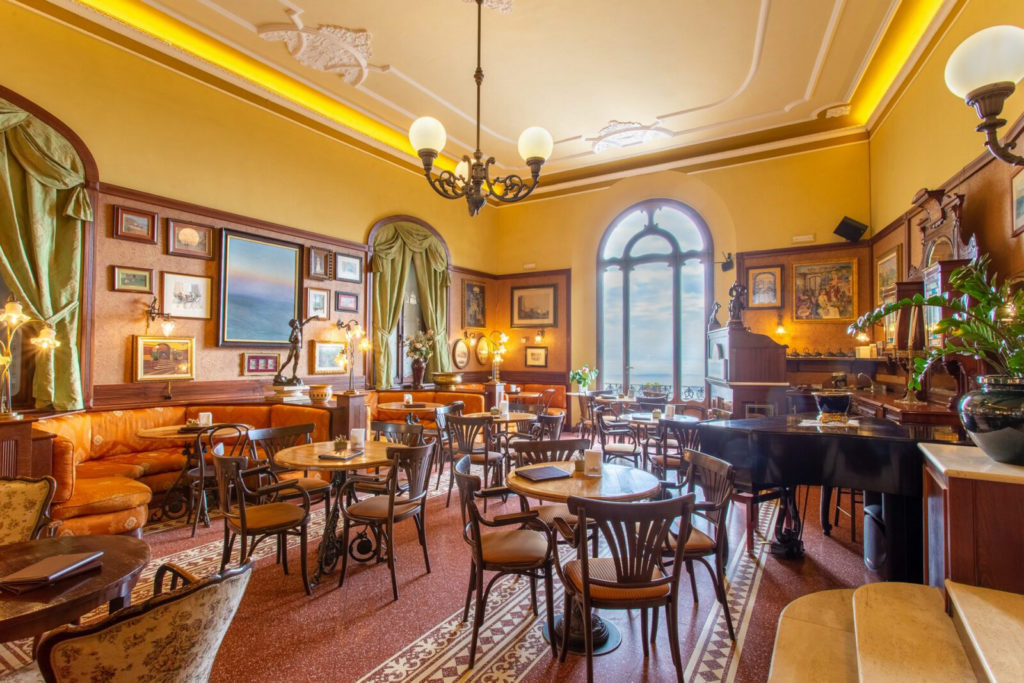
Caffe Pedrocchi
Caffè Pedrocchi in Padua is architecturally fascinating because it was created from different buildings and facades which were integrated into a single, eclectic ensemble. Founded in 1831 by Francesco Pedrocchi, the coffee house was expanded by his son Antonio and the Venetian architect Jappelli to include the entire block. The interior contains neoclassical elements and rooms with different influences and has always been the cultural, political and journalistic center of Padua and remains a center of cultural activity to this day.
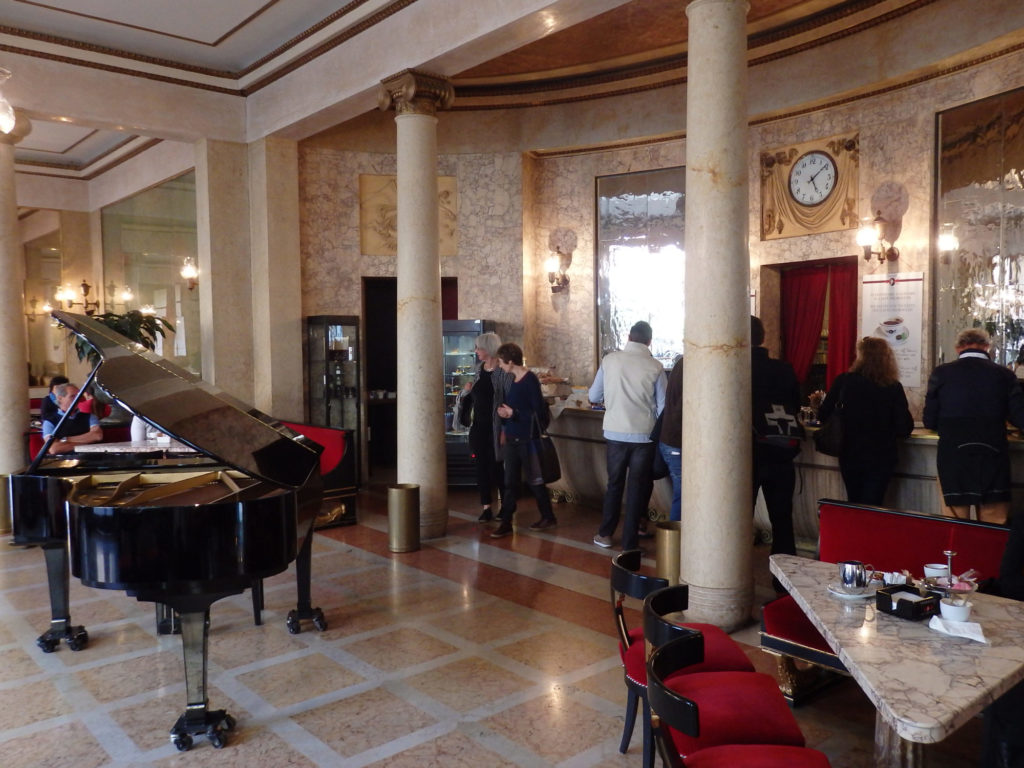
Caffe dell'ussero
Caffè dell’Ussero in Pisa was founded in 1775 and counts some illustrious patrons who came here as students. These include Giosuè Carducci, the first Italian Nobel Prize laureate; Filippo Mazzei, friend of Thomas Jefferson and who inspired the great doctrine “All men are created equal” and Alessandro D’Ancona, the first director of the newspaper La Nazione, among many others.
